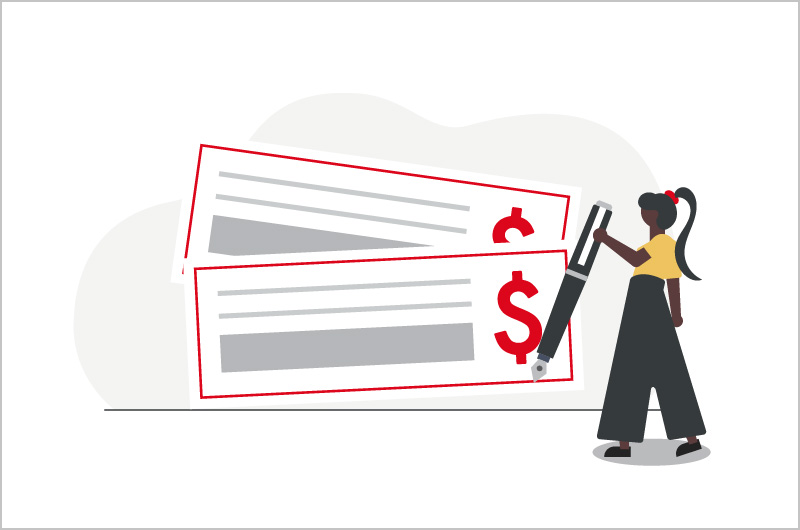What Is a Checking Account?
A checking account is a fundamental financial tool that most people use for their everyday banking needs. Whether you’re paying bills, receiving a paycheck, or managing your day-to-day expenses, a checking account serves as a hub for your financial transactions. In this article, we’ll explore what a checking account is, how it works, the different types available, and the benefits it offers. By the end, you’ll have a comprehensive understanding of checking accounts and how to use them effectively.
Understanding Checking Accounts
At its core, a checking account is a deposit account held at a financial institution, such as a bank or credit union, that allows you to deposit and withdraw money easily. Checking accounts are designed for frequent transactions, making them ideal for managing everyday expenses like groceries, utilities, and rent.
How Does a Checking Account Work?
When you open a checking account, you deposit money into it, which you can then access in several ways:
- Debit Card: Most checking accounts come with a debit card that you can use to make purchases, withdraw cash from ATMs, or pay bills online.
- Checks: Although less common today, checks are still used by many people to pay bills or make larger purchases. Writing a check allows you to transfer money directly from your checking account to another party.
- Electronic Transfers: You can transfer money from your checking account to another account, whether it’s within the same bank or at a different institution. This is especially useful for paying bills or sending money to friends and family.
- Automatic Payments: Many people set up automatic payments for recurring bills, such as utilities, mortgages, or subscriptions. This ensures that bills are paid on time without manual intervention.
Key Features of a Checking Account
- Accessibility: Checking accounts offer easy access to your money, whether through ATMs, debit cards, checks, or online banking. This makes them ideal for managing daily expenses.
- Low or No Interest: Unlike savings accounts, checking accounts typically offer little to no interest on the balance. Their primary purpose is not to grow your money but to provide a convenient way to manage it.
- Overdraft Protection: Many checking accounts offer overdraft protection, which allows you to spend more money than you have in your account. While this can prevent declined transactions, it often comes with fees.
- Monthly Fees: Some checking accounts charge a monthly maintenance fee, although many banks waive these fees if you meet certain criteria, such as maintaining a minimum balance or setting up direct deposits.
Types of Checking Accounts
There are several types of checking accounts, each designed to meet different financial needs. Understanding these options can help you choose the right account for your situation.
Standard Checking Account
This is the most common type of checking account, suitable for everyday banking needs. It offers basic features like a debit card, checks, and online banking. Standard checking accounts may charge a monthly fee, but this can often be waived by meeting certain conditions.
Student Checking Account
Designed for students, these accounts typically have lower fees and may offer special features like free ATM access or discounts on certain services. They are ideal for young people who are new to managing their finances.
Joint Checking Account
A joint checking account is shared by two or more individuals, such as spouses or business partners. Each account holder has equal access to the funds, making it convenient for managing shared expenses.
Interest-Bearing Checking Account
As the name suggests, this type of checking account offers interest on the balance, though usually at a lower rate than a savings account. It’s a good option if you want to earn some interest while still having easy access to your money.
Business Checking Account
This account is specifically designed for business owners. It often includes features tailored to business needs, such as higher transaction limits, merchant services, and the ability to write checks in the company’s name.
Second Chance Checking Account
For those with a poor banking history, a second chance checking account provides an opportunity to rebuild financial stability. These accounts may have higher fees or restrictions but can help you regain access to traditional banking services.
Benefits of a Checking Account
A checking account offers several benefits that make it an essential part of managing your finances:
Convenience
Checking accounts provide easy access to your money through various channels, including debit cards, checks, and online banking. This convenience makes it simple to pay bills, make purchases, and transfer money whenever needed.
Security
Funds in a checking account are typically insured by the Federal Deposit Insurance Corporation (FDIC) in the United States, up to $250,000 per depositor, per bank. This provides peace of mind knowing that your money is protected.
Budgeting and Tracking
Many checking accounts come with online banking tools that allow you to track your spending, set budgets, and monitor your account activity. This helps you stay on top of your finances and avoid overdrafts or fees.
Direct Deposit
With a checking account, you can receive your paycheck via direct deposit, which is faster and more secure than receiving a paper check. Many employers and government agencies offer direct deposit as an option.
Bill Payment
Most checking accounts offer online bill payment services, allowing you to pay your bills directly from your account. This is a convenient way to manage recurring payments and avoid late fees.
Automatic Transfers
You can set up automatic transfers from your checking account to other accounts, such as savings or investment accounts. This helps you automate your savings and stay on track with your financial goals.
Potential Drawbacks of a Checking Account
While checking accounts offer numerous benefits, there are also some potential drawbacks to be aware of:
Low Interest Rates
Most checking accounts offer little to no interest on the balance, meaning your money doesn’t grow as it would in a savings or investment account.
Fees
Some checking accounts come with fees, such as monthly maintenance fees, overdraft fees, and ATM fees. It’s important to understand the fee structure of your account and take steps to minimize these costs.
Overdraft Risk
If you spend more money than you have in your checking account, you may incur overdraft fees. While overdraft protection can prevent declined transactions, it can also lead to costly fees if not managed carefully.
Choosing the Right Checking Account
When choosing a checking account, it’s essential to consider your financial needs and goals. Here are some factors to keep in mind:
Fees and Charges
Look for an account with low or no fees. Many banks offer ways to waive fees, such as maintaining a minimum balance or setting up direct deposits. Be sure to read the fine print and understand the costs associated with the account.
Accessibility
Consider how you plan to access your money. If you need frequent access to ATMs, choose a bank with a large network of fee-free ATMs. If you prefer online banking, make sure the bank offers a user-friendly platform.
Interest Rates
If earning interest is important to you, consider an interest-bearing checking account. However, be aware that the interest rates are typically lower than those of savings accounts.
Customer Service
Good customer service is crucial, especially if you encounter issues with your account. Research the bank’s reputation for customer support and consider visiting a local branch to assess the level of service.
Additional Features
Some checking accounts offer additional features, such as rewards programs, mobile banking apps, or budgeting tools. Consider whether these features align with your financial needs and preferences.
Conclusion
A checking account is an essential tool for managing your finances, offering convenience, security, and flexibility. By understanding how checking accounts work, the different types available, and the benefits they offer, you can make informed decisions about which account best suits your needs. Remember to consider factors like fees, accessibility, and customer service when choosing a checking account, and take advantage of the tools and features available to manage your money effectively.
Keep an eye for more news & updates on GlamourrTomorrow!






